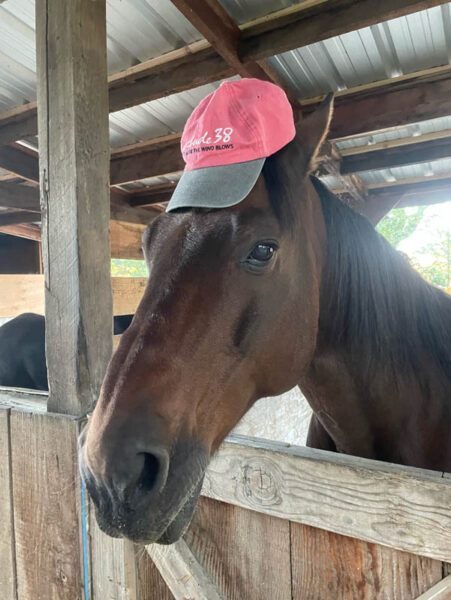
Horsing Around in the Horse Latitudes
It’s the season for Northern Hemisphere sailors to sail south. When this photo arrived in our inbox, it reminded us that all those southbound sailors on the Baja Ha-Ha, and everywhere else, will be crossing the horse latitudes as they head for warmer weather. Bay Area sailor Ronnie Simpson crossed the horse latitudes a couple of days ago on his way around the world. He’s now at latitude 22 on the Global Solo Challenge as he holds the lead in his start-date fleet.
The horse latitudes lie at about 30 degrees north and south of the equator and are characterized by sunny skies, calm winds, and very little precipitation. It’s pleasant but not necessarily ideal for sailing, especially if you don’t have an auxiliary engine or aren’t allowed to use one because you’re racing.

According to Wikipedia, the lore surrounding the naming of the horse latitudes has three popular explanations. The one we’ve heard most often is that when Spanish galleons were transporting horses to the New World (because there weren’t any horses in the Americas), they would sometimes get becalmed for long durations at 30 degrees north. As they ran low on supplies, they’d throw dead or dying horses overboard to conserve resources for the crew.
Alternatively, another legend states that seamen would create a straw-stuffed effigy of a horse and “beat a dead horse” as a ritual to celebrate the time they paid off debts incurred between paychecks on voyages. And finally, there is the thought that in both the northern and southern latitudes, a sailing ship could be becalmed but get “horsed” when it made progress by latching onto a favorable current in the horse latitudes.
We tip our hat to all three possible explanations and to all the sailors currently crossing the horse latitudes, which, on the West Coast, occur just south of Ensenada. Yes, that’s only eight degrees or 480 miles south of those of us on latitude 38. Weather patterns are also one of the reasons it’s so much more interesting to go south on a sailboat than on I-5.
This photo, submitted by Monique Selvester, and many more appear in October’s Sailagram photos submitted by our readers. If you have a photo to add for next month, send it to [email protected].
